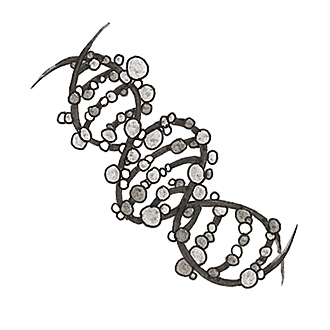
Related Questions
- How are thoughts measured?
- Why do our bodies make boogers?
- How do glucometers work?
- Why can’t machines — or humans — sniff out drugs or explosives as well as dogs?
- Is sleep necessary?
- Why do we sweat more in high humidity?
- Can hearts, livers, and kidneys be grown in the lab for human transplants?
- What are thoughts made of?
- Could I put a computer chip in my brain to make me smarter?
- Is it possible to control someone’s thoughts?
If I have a high risk of cancer, can my genes be modified to avoid it?
Not yet — but gene therapy could soon be a path to personalized “cures” for cancer and other diseases…
By Jason M. Rubin“In a perfect world, if a person knew he or she had a mutation that made them a high risk for cancer, we could go in and change their DNA and prevent the inevitable from ever occurring,” says Daniel G. Anderson, associate professor of chemical engineering at MIT and a researcher at the Koch Institute for Integrative Cancer Research and the Harvard-MIT Division of Health Sciences and Technology. “Right now, we can identify these cells, but getting them to change is the challenge.”
A person’s immune system works to fight off infections. Mutations occur at the genetic level, and the defective genes proliferate and become cancer cells or other manifestations of disease. Researchers are trying to do what the immune system has failed to do — eradicate the mutations — but why do immune systems fail in the first place? “The immune system does have a mechanism for killing cancer cells in patients,” says Anderson, “but cancer cells are often extremely resilient. One of our key areas of research right now is on engineering the immune system to fight cancer.”
Among Koch Institute researchers’ most recent studies was a small study in Philadelphia that was described recently in The New England Journal of Medicine and Science Translational Medicine. Doctors successfully treated three people in advanced stages of leukemia. In one patient, doctors removed one billion T-cells (the white blood cells that are supposed to attack tumors) and added new genes to them via a modified HIV virus. Viruses are a common medium because they are designed to invade cells, Anderson says, and the HIV virus was disabled so it posed no risk to the patient. In their study, the reprogrammed cells attacked the leukemic cells and the patient has been in complete remission for more than a year. (Whether or not that status is permanent remains to be seen.)
Anderson’s own research revolves around the idea of using RNA interference (RNAi) in animal models to effectively silence the expression of specific genes, including those that cause cancer. “RNAi works by disrupting the transmission of genetic information from a cell’s nucleus to the part of the cell where proteins are made,” he explains. “We can deploy short strands of RNA that bind with and destroy the ‘messenger RNA’ that carries this information, thereby turning off the cancer-causing gene before it can do its work.”
This kind of gene therapy is also being studied to cure people with severe combined immunodeficiency (SCID, more commonly known as “bubble boy disease”). The disease is caused by a malfunctioning gene in the bone marrow that inhibits its ability to produce immune cells. In two recent British studies, sixteen children with SCID were injected with their own bone marrow that had been taken out and modified with a functional gene; fourteen of the children showed significant improvement.
“This is why we do research,” says Anderson. “Each breakthrough takes us one step closer to a cure, and we learn as much from our failures as from our successes. We’re not there yet, but gene therapy and other technologies like nanoparticles and more advanced viral systems prove that real progress is being made.”
Posted: November 22, 2011